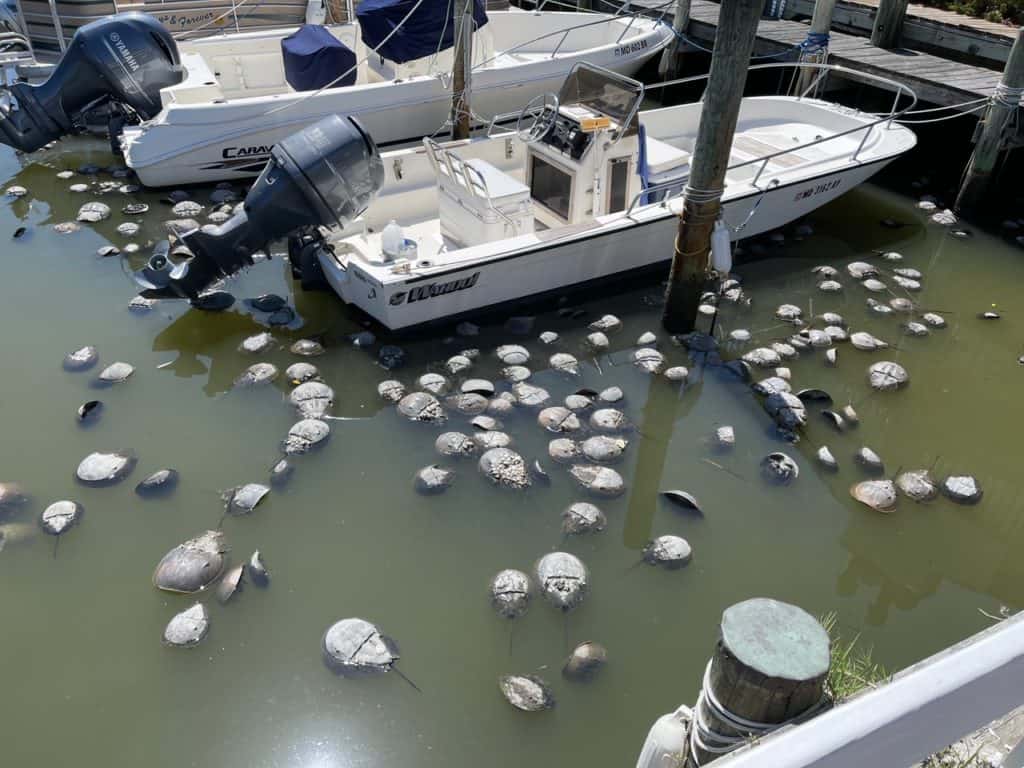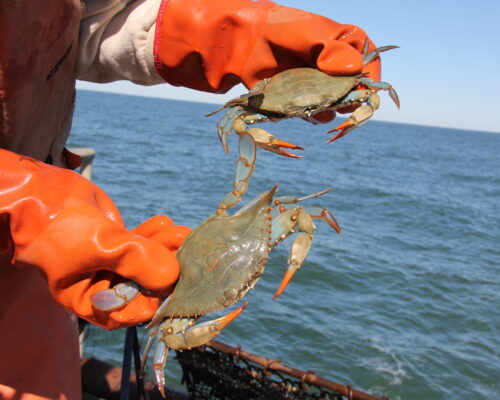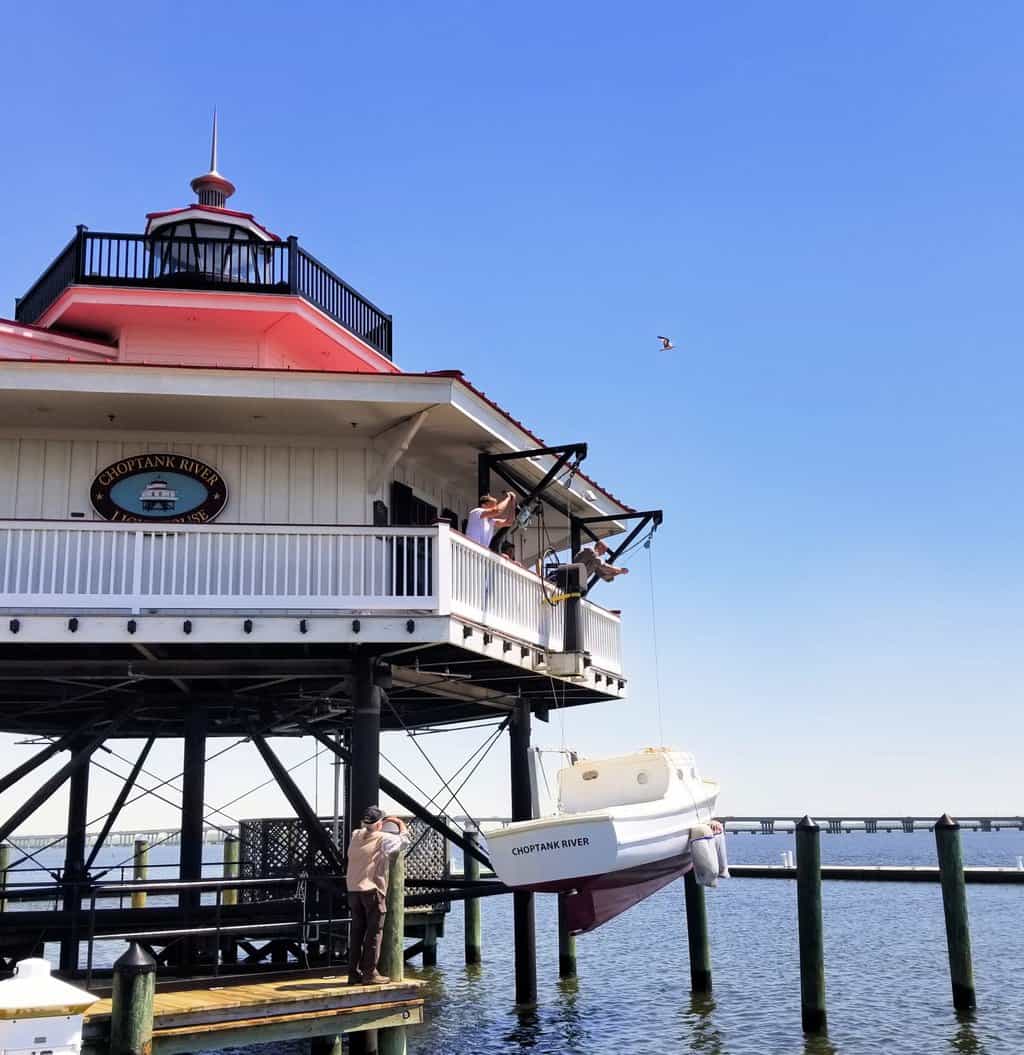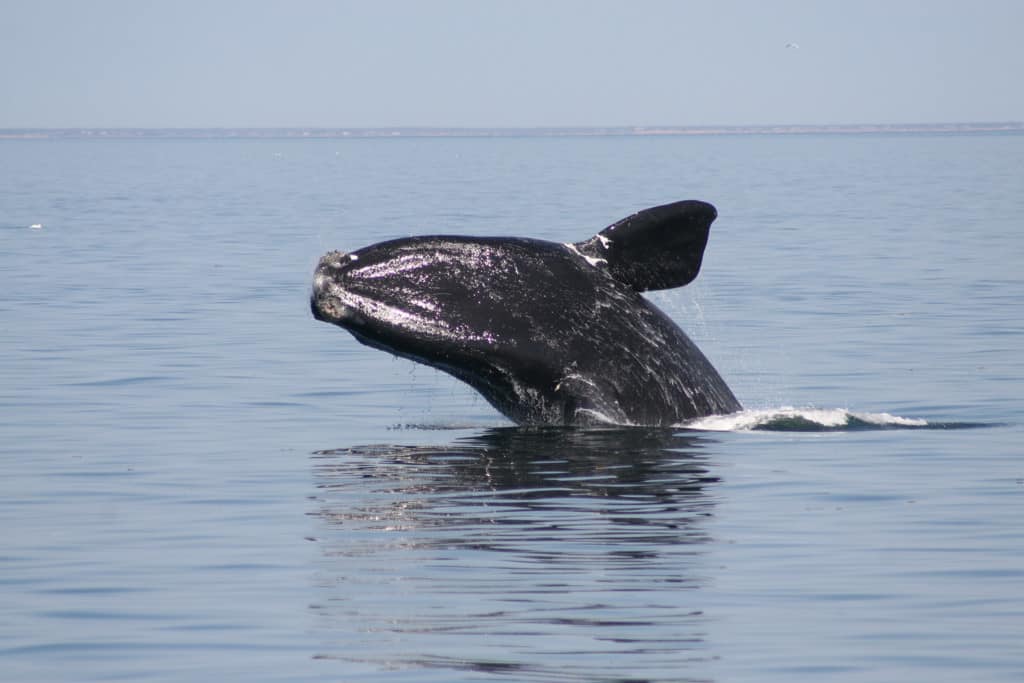Hundreds of dead horseshoe crabs are washing up into an Ocean City, Md. canal, alarming residents and tourists, and causing a smelly problem no one quite knows how to solve.
The manmade canal on 94th Street is the resting place for horseshoe crabs that apparently suffered from a high mortality rate due to poor weather conditions this spring. It was rainier and colder than usual, and temperatures didn’t gradually rise as the usually do at the time horseshoe crabs begin to spawn, experts tell us. Then, a quick warmup triggered a “mass orgy response”—a crazy mad rush to reproduce, rather than a slow progression. That caused the crabs quite a bit of stress.
Wind pushed the stressed crabs into the dead-end canal, where it’s believed low oxygen levels caused them to die off.
Sandi Smith, coordinator of the Maryland Coastal Bays Program, calls it a “perfect storm for disaster” and says the dead horseshoe crabs were still washing up, some 10 days after it began.
For those living on the canal at 94th and Rusty Anchor Rd., the smell is unbearable, and the crabs’ carcasses aren’t going anywhere. Nationally-known country singer Jimmy Charles, an Eastern Shore native who was staying with family in Ocean City, posted photos and video of the dead crabs on Instagram. He tells Bay Bulletin, “There were hundreds and they were all dead. The stench was horrific.”
Smith isn’t sure just how many crabs have washed up dead in the canal, but Coastal Bays Program employees and two city volunteers cleaned up more than 1,000 crabs the first day alone. Smith tells us the town of Ocean City has also provided nets and large trash cans for residents to fish out the crab carcasses.
Whose responsibility is it to clean up the problem? No one seems to know, but Smith points out that since the canal was manmade by a property developer years ago, it’s technically private property. And if a crab is stuck under a finger pier, that’s private property, too. But Smith is fielding calls from upset residents who say they shouldn’t have to clean it up.
She hopes this incident leads to some kind of resolution with Ocean City about who take care of such a matter. And it’s not the first time this has happened: the same canal saw a spate of horeshoe crab deaths in 2016.
The Maryland Coastal Bays Program is one of 28 national estuary programs, dedicated to protecting the five coastal bays behind Ocean City and Assateague Island through restoration, science, monitoring, and education/outreach.
Even so, they’re not equipped for a cleanup on this scale. “We’re just a small staff of eight, picking [the dead crabs] out,” says Smith.
–Meg Walburn Viviano




